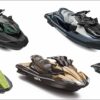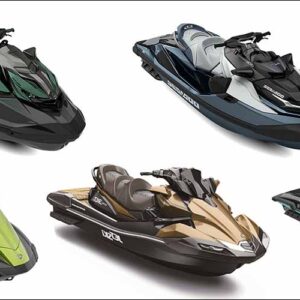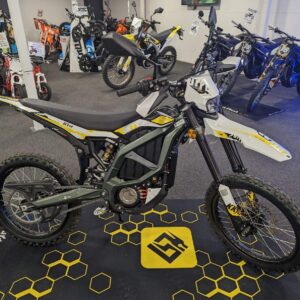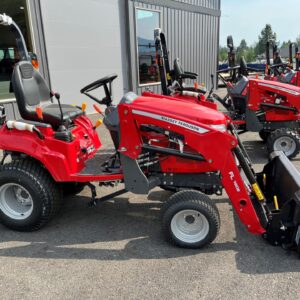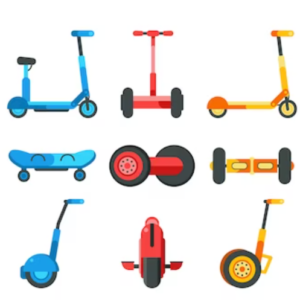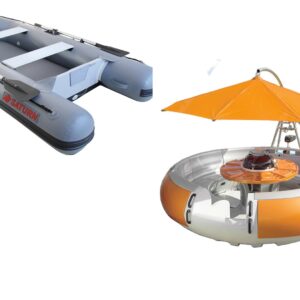An outboard motor is a propulsion system for boats, consisting of a self-contained unit that includes engine, gearbox and propeller or jet drive, designed to be affixed to the outside of the transom. They are the most common motorised method of propelling small watercraft. As well as providing propulsion, outboards provide steering control, as they are designed to pivot over their mountings and thus control the direction of thrust. The skeg also acts as a rudder when the engine is not running. Unlike inboard motors, outboard motors can be easily removed for storage or repairs.
In order to eliminate the chances of hitting bottom with an outboard motor, the motor can be tilted up to an elevated position either electronically or manually. This helps when traveling through shallow waters where there may be debris that could potentially damage the motor as well as the propeller. If the electric motor required to move the pistons which raise or lower the engine is malfunctioning, every outboard motor is equipped with a manual piston release which will allow the operator to drop the motor down to its lowest setting.
General use of Outboard Motor
Large outboards
Large outboards affixed to the transom using clamps and are either tiller steer up to approx 100 hp. Generally 100 hp plus is linked to controls at the helm. These range from 2-, 3-, and 4-cylinder models generating 15 to 135 horsepower suitable for hulls up to 17 feet (5.2 m) in length to powerful V6 and V8 cylinder blocks rated up to 627 hp (468 kW) with sufficient power to be used on boats of 37 feet (11 m) or longer.
Portable
Small outboard motors, up to 15 horsepower or so, are easily portable. They are affixed to the boat via clamps and thus easily moved from boat to boat. These motors typically use a manual start system, with throttle and gearshift controls mounted on the body of the motor, and a tiller for steering. The smallest of these weigh as little as 12 kilograms (26 lb), have integral fuel tanks, and provide sufficient power to move a small dinghy at around 8 knots (15 km/h; 9.2 mph) This type of motor is typically used:
- to power small craft such as jon boats, dinghies, canoes, etc
- to provide auxiliary power for sailboats
- for trolling aboard larger craft, as small outboards are typically more efficient at trolling speeds. In this application, the motor is frequently installed on the transom alongside and connected to the primary outboard to enable helm steering. In addition many small motor manufacturers have begun offering variants with power trim/tilt and electric starting functions so that they may be completely controlled remotely
Electric-powered Motor
Electric outboard motors are self-contained propulsory units for boats, first invented in 1973 by Morton Ray of Ray Electric Outboards. These are not to be confused with trolling motors, which are not designed as a primary source of power. Most electric outboard motors have 0.5 to 4 kW direct current (DC) electric motors, operated at 12 to 60 volts DC. Recently developed outboard motors are powered with an alternating current (AC) or DC electric motor in the power head like a conventional petrol engine. With this setup, a motor can produce 10 kW output or more and is able to replace a petrol engine of 15 HP or more. The advantage of the induction or asynchronous motor is the power transfer to the rotor by means of electromagnetic induction. As these engines do not use permanent magnets, they require less maintenance and develop more torque at lower RPM.
Pump-jet: Pump-jet propulsion is available as an option on most outboard motors. Although less efficient than an open propeller, they are particularly useful in applications where the ability to operate in very shallow water is important. They also eliminate the laceration dangers of an open propeller.
Propane: Propane outboard motors are available from several manufacturers. These products have several advantages such as lower emissions, absence of ethanol-related issues, and no need for choke once the system is pressurized. Lehr is regarded as the first manufacturer to have brought a propane-powered outboard motor to market by Popular Mechanics and other boating publications.
Different outboard engine brands require different transom dimensions and sizes, that affects performance and trim.
| Outboard Brand – Model | Transom Angle | Max Transom Thickness | Transom To Bulkhead |
|---|---|---|---|
| Yamaha – F350 | 12° | 712 mm | |
| Yamaha – F300 | 12° | 712 mm | |
| EVINRUDE – DE 300 | 14° | 68.58 mm | |
| EVINRUDE – G2 300 HP | 14° | ||
| SUZUKI – DF 300 AP | 14° | 81 mm | |
| MERCURY – 300 HP | 14° | ||
| LEHR – 5.0HP | 14° | ||
| LEHR – 2.5HP | 14° |

